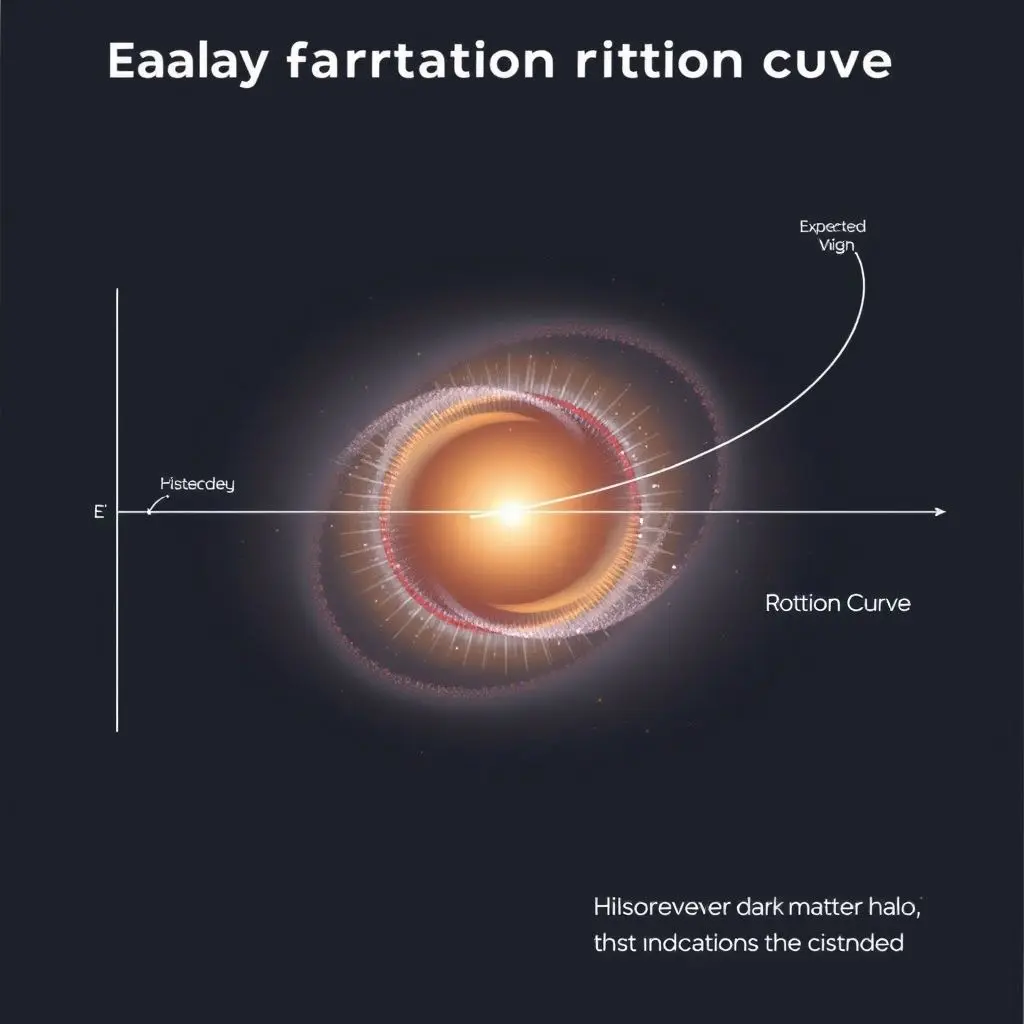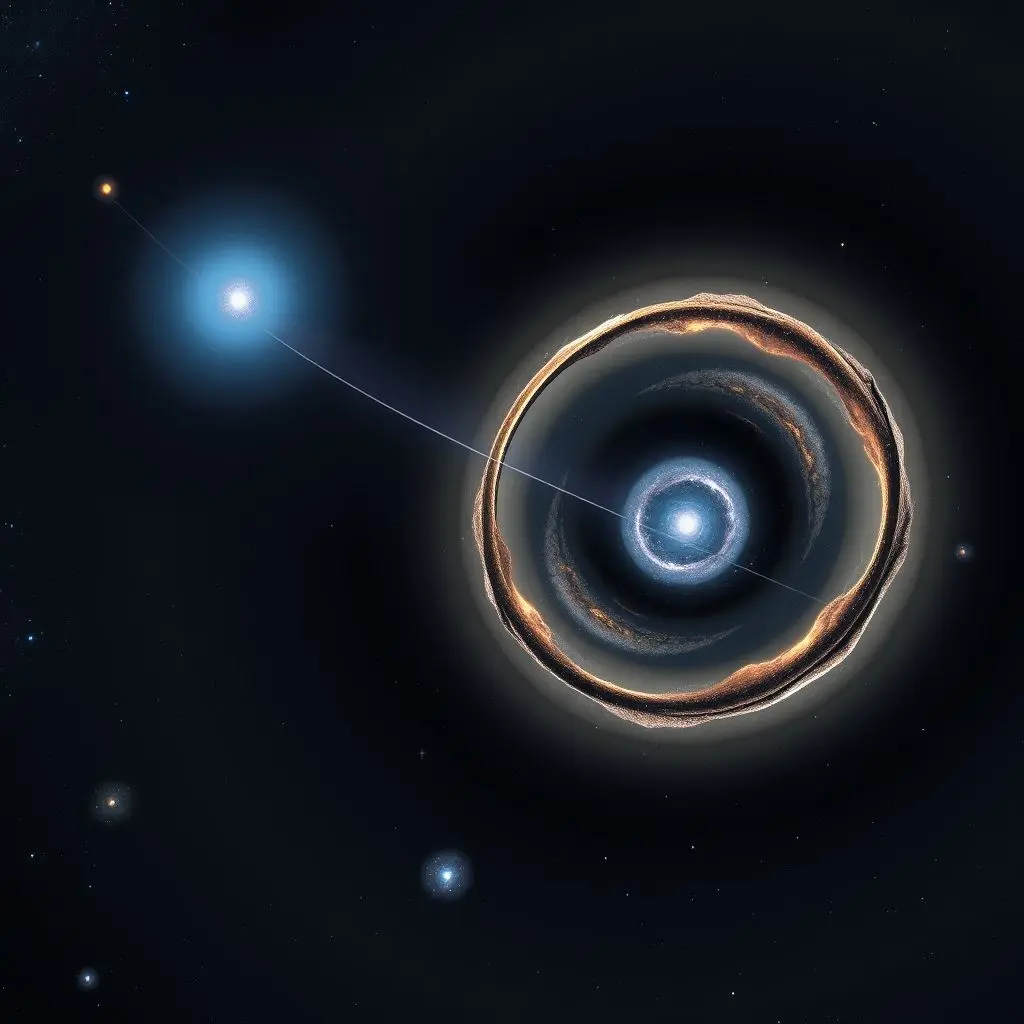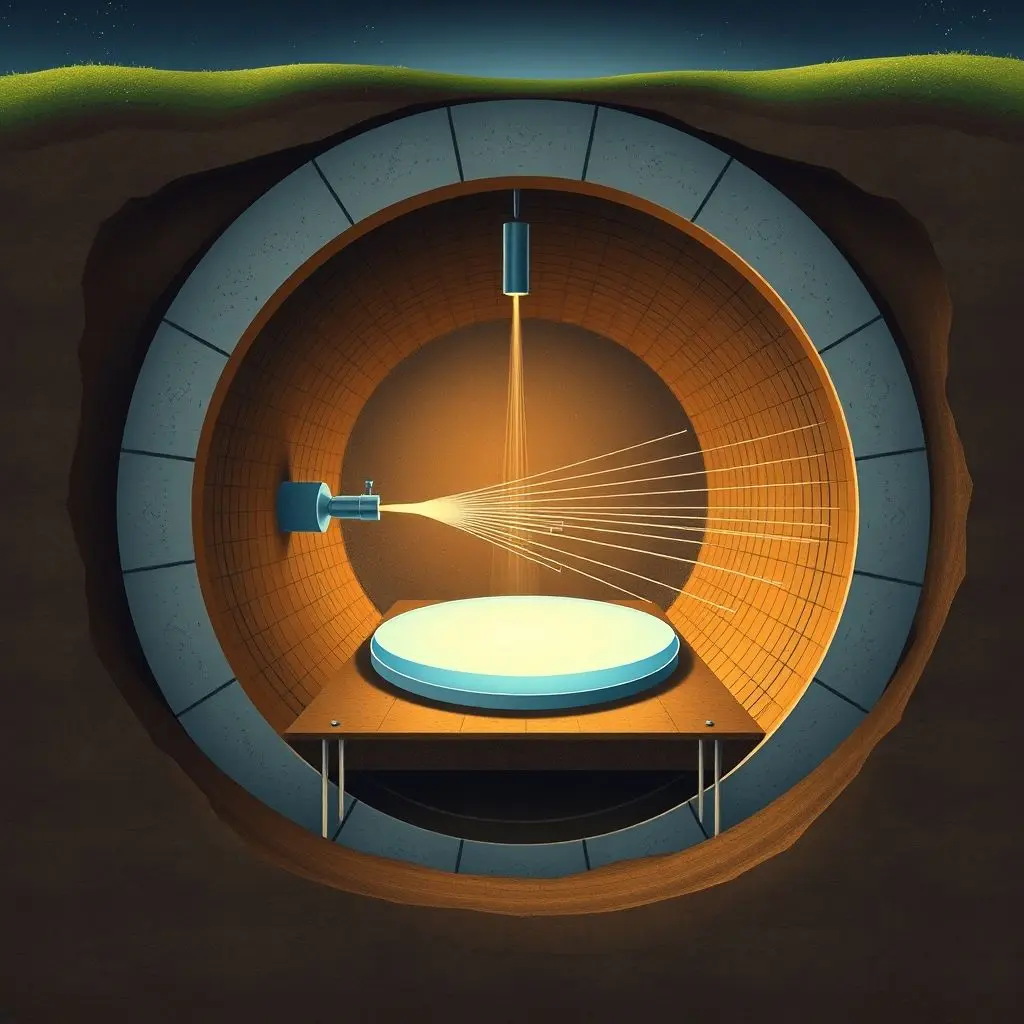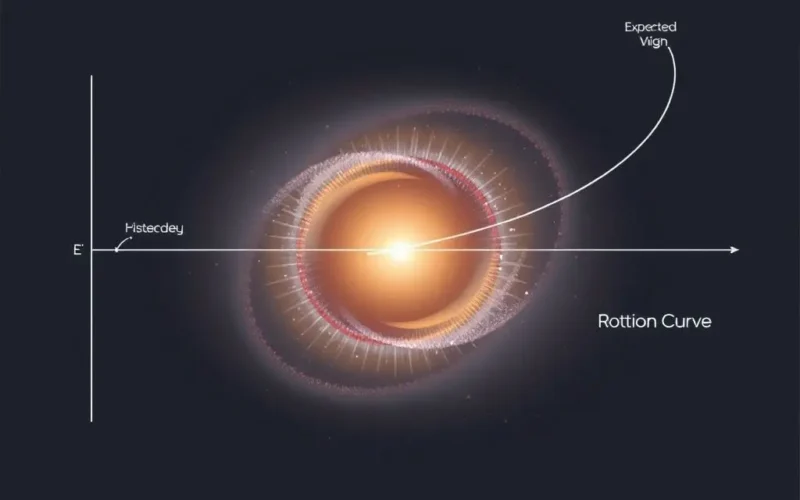Imagine looking out at the night sky, billions of stars twinkling, galaxies swirling, a seemingly endless expanse of light. Now, picture this: 95% of everything out there is completely invisible to us. Not just faint, but truly undetectable by light in any form we know – it doesn’t emit, reflect, or absorb photons. We’re talking about the universe’s enigmatic dark side: Dark Matter and Dark Energy.
These aren’t just placeholders for our ignorance; they are fundamental components that dictate the cosmos’s structure and fate. Visible matter – everything we see, from the smallest atom to the largest galaxy cluster – makes up less than 5% of the universe’s total mass-energy content. The rest is dominated by these mysterious entities, whose presence we infer only through their profound gravitational influence.
Table of Contents
The Cosmic Accounting Problem: Why We Know Something’s Missing
Our understanding of gravity, largely based on Einstein’s general relativity, works remarkably well for explaining things within our solar system or even the behavior of individual galaxies to some extent. But when we look at larger scales, discrepancies emerge that visible matter alone cannot explain.
The Case for Dark Matter: Keeping Galaxies Together
One of the earliest pieces of evidence came from observing how galaxies spin. Stars and gas clouds in the outer regions of galaxies orbit the galactic center far faster than they should if their speed were determined only by the gravity of the visible matter within their orbit. It’s like a merry-go-round where the riders on the edge are moving at breakneck speeds, yet they aren’t flung off. There must be extra, unseen mass providing the gravitational pull to hold these outer regions in orbit.
This ‘missing mass’ problem led to the hypothesis of Dark Matter. It interacts gravitationally, hence its binding effect on galaxies and galaxy clusters, but it doesn’t interact with light (electromagnetic force), hence its ‘darkness’. It also doesn’t seem to interact strongly with itself or with regular matter via the strong or weak nuclear forces (other than potentially a very weak interaction). This makes it incredibly difficult to detect directly.

The Case for Dark Energy: Pushing the Universe Apart
If Dark Matter is the unseen glue holding structures together, Dark Energy is the unseen force pushing everything apart. For decades, cosmologists assumed the expansion of the universe, set in motion by the Big Bang, must be slowing down due to the cumulative gravitational pull of all the matter within it. However, observations in the late 1990s, particularly using distant Type Ia supernovae as ‘standard candles’ (objects with a known intrinsic brightness), revealed something astonishing: the universe’s expansion is actually accelerating.
This accelerating expansion cannot be explained by known forms of matter or energy. It requires an unknown form of energy with negative pressure, a property that causes spacetime itself to expand faster over time. This mysterious entity is what we call Dark Energy, and it appears to dominate the universe’s total energy budget, making up roughly 68%.

The Quest: Cutting-Edge Tech Hunting the Invisible
Since Dark Matter and Dark Energy don’t reveal themselves through light, scientists must employ ingenious methods and state-of-the-art technology to detect their presence and understand their nature. It’s a bit like searching for a ghost by watching how it subtly moves the furniture around a room.
Want a quick rundown of this cosmic mystery? Check out this short video I made:
Now, let’s delve deeper into the technologies enabling this incredible search:
Gravitational Lensing: Bending Light to Reveal Mass
One of the most powerful tools to detect Dark Matter’s gravitational influence is gravitational lensing. Predicted by Einstein, this phenomenon occurs when a massive object (like a galaxy or a cluster of galaxies) bends the fabric of spacetime around it, causing light from objects behind it (like distant galaxies) to be distorted, magnified, or even multiplied as it travels towards us.
By precisely measuring how the light from background galaxies is warped, astronomers can map the distribution of mass in the foreground object. These maps consistently show that the gravitational effect is much stronger than can be accounted for by the visible matter alone, revealing the presence and distribution of Dark Matter. Space telescopes like the Hubble Space Telescope and the James Webb Space Telescope are crucial for these observations due to their sharp vision unobscured by Earth’s atmosphere.

Direct Detection Experiments: Hoping for a Cosmic Collision
If Dark Matter consists of particles that interact very weakly with normal matter (the leading hypothesis suggests Weakly Interacting Massive Particles, or WIMPs), then it might be possible, though incredibly rare, for one of these particles to collide with an atomic nucleus in a detector on Earth.
These direct detection experiments are typically located deep underground – in old mines or tunnels – to shield them from cosmic rays and other background radiation that could mimic a faint Dark Matter signal. They use ultra-sensitive detectors, often cooled to extremely low temperatures, containing target materials like Xenon or Germanium. When a hypothetical Dark Matter particle strikes a nucleus in the target, it might produce a tiny recoil energy that the detector can register. Experiments like LUX-ZEPLIN (LZ) in South Dakota and XENONnT in Italy are pushing the boundaries of sensitivity in this challenging search.

Indirect Detection Experiments: Looking for Annihilation Products
Another approach assumes that if Dark Matter particles are their own antiparticles, or if they interact with antiparticles, they might annihilate when they meet, producing detectable particles like gamma rays, neutrinos, or antimatter positrons and antiprotons. Scientists use telescopes and detectors in space and on Earth to search for these potential annihilation products coming from regions where Dark Matter is believed to be abundant, such as the galactic center or dwarf galaxies.
Space-based gamma-ray telescopes like the Fermi-LAT have observed unexpected excesses of gamma rays from certain regions, which are potential, though not yet conclusive, hints of Dark Matter annihilation. Neutrino observatories like IceCube at the South Pole look for high-energy neutrinos that could also be signatures of these events.
Particle Accelerators: Trying to Create Dark Matter
The world’s most powerful particle accelerators, like the Large Hadron Collider (LHC) at CERN, collide protons at near light speed, recreating conditions similar to the early universe. Scientists hope that if Dark Matter particles exist and have masses within the energy range accessible by the accelerator, they might be produced in these collisions.
Since Dark Matter particles wouldn’t interact with the detectors, their presence would be inferred by missing energy and momentum in the collision debris – essentially, energy that zipped away without being detected. While the LHC hasn’t yet found direct evidence of Dark Matter production, it continues to constrain the possible properties (like mass and interaction strength) of potential Dark Matter candidates.
Cosmic Microwave Background (CMB) Analysis: A Baby Photo of the Universe
The Cosmic Microwave Background is the afterglow radiation from the Big Bang, a snapshot of the universe when it was only about 380,000 years old. The tiny temperature fluctuations in the CMB contain crucial information about the universe’s composition and structure at that epoch.
Detailed analysis of these fluctuations by missions like the Planck satellite strongly supports the existence of both Dark Matter and Dark Energy. The patterns in the CMB are consistent with a universe model where roughly 5% is normal matter, 27% is Dark Matter, and 68% is Dark Energy. The properties inferred from the CMB align with the gravitational effects observed on larger scales today.
Challenges and the Road Ahead
Despite decades of searching and increasingly sophisticated technology, the fundamental nature of Dark Matter and Dark Energy remains one of science’s greatest unsolved mysteries. We don’t know what particles make up Dark Matter (if it’s particles at all), and the physical origin of Dark Energy is even more baffling – sometimes referred to as the cosmological constant, but its measured value is vastly different from theoretical predictions.
Future experiments and missions are planned to push the boundaries further. New, more sensitive direct detection experiments, larger sky surveys to map gravitational lensing and supernovae with unprecedented precision (like the Vera C. Rubin Observatory and the Euclid satellite), and potentially new generations of particle accelerators will continue the hunt. The possibility also exists that our current understanding of gravity needs modification on cosmic scales, which some alternative theories propose instead of Dark Matter and Dark Energy, though these theories also face challenges explaining all observations.
Peering into the Dark
The fact that 95% of the universe is hidden from our direct view is both humbling and incredibly exciting. It tells us that our current picture of the cosmos is incomplete and that fundamental discoveries about the nature of reality are still waiting to be made. The ongoing search for Dark Matter and Dark Energy, driven by ingenious technology and relentless curiosity, is a testament to humanity’s drive to understand the universe, even the parts shrouded in darkness.
FAQs about Dark Matter & Dark Energy
Q: Are Dark Matter and Dark Energy the same thing?
A: No, they are fundamentally different. Dark Matter is thought to be a form of matter that interacts gravitationally but not electromagnetically. It clumps together and influences the structure of galaxies and clusters. Dark Energy is a form of energy that seems to be uniformly distributed throughout space and causes the universe’s expansion to accelerate.
Q: Can Dark Matter or Dark Energy interact with us?
A: Dark Matter interacts gravitationally, so it affects everything with mass, including us, but this effect is negligible on our small scale compared to regular matter. The hypothesized weak interaction with normal matter is what direct detection experiments are trying to find, but it would be incredibly rare. Dark Energy’s effect is only significant on the largest cosmic scales, pushing galaxies and clusters away from each other; it doesn’t affect objects bound by gravity, like our solar system or even our galaxy.
Q: Could Dark Matter be just regular matter that’s not giving off light (like black holes or brown dwarfs)?
A: While those objects exist and are ‘dark’ in visible light, astronomers can estimate the total amount of regular matter (called baryonic matter) in the universe by looking at the abundance of light elements created in the Big Bang and analyzing the Cosmic Microwave Background. These methods show that there isn’t enough baryonic matter to account for the gravitational effects attributed to Dark Matter. Also, phenomena like the Bullet Cluster collision show Dark Matter behaving differently than regular matter (passing through each other where gas clouds collide).
Q: If Dark Energy is pushing the universe apart, does that mean everything will eventually be infinitely far from everything else?
A: On the largest scales, yes. The accelerating expansion driven by Dark Energy means that eventually, galaxies beyond our local group will recede from us faster than the speed of light, making them observationally inaccessible. Structures bound by gravity, like galaxies and galaxy clusters, will remain intact, but the space between them will grow exponentially.
Q: When do scientists expect to finally detect Dark Matter?
A: It’s impossible to put a specific timeline on it. Decades of searching have placed strong constraints on many Dark Matter candidates, but the search space is vast. Success depends on the true nature of Dark Matter – its mass, interaction strength, etc. Future experiments have higher sensitivity and cover new theoretical possibilities, increasing the *chance* of a detection, but there’s no guarantee when or if a direct detection will occur with current technologies.




